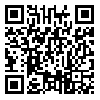BibTeX | RIS | EndNote | Medlars | ProCite | Reference Manager | RefWorks
Send citation to:
URL: http://mjiri.iums.ac.ir/article-1-388-en.html
Abstract
Background: Lymphoproliferative disorders are among the most serious and potentially fatal complications of chronic immunosuppression in kidney transplant recipients. The principle risk factors for development of PTLD are the degree of overall immunosuppression and the EBV serostatus of the recipient. In this study, the risk of PTLD in kidney transplant recipients who received Anti- Lymphocyte Globulin (ALG) or Anti Thymocyte Globulin (ATG) was evaluated.
Methods: We retrospectively studied 520 patients who underwent kidney transplantation during the period from December 1989 to December 2002, at Taleghani Hospital, Tehran.
Results: 369 patients received classic immunosuppression (prednisolone, cyclosporine, mycophenolate mofetil) and 151 patients (29%) received classic immunosuppression with ALG or ATG. Eight patients had developed PTLD, 5 cases of which (62.5%) received classic immunosuppression without ALG or ATG. Incidence of PTLD was 3.3 percent in patients who received ALG or ATG and 0.8 percent for those patients who did not receive ATG or ALG. This difference is very significant (p < 0.05).
Conclusion: ALG or ATG therapy could act as a risk factor for PTLD.
| Rights and permissions | |
 |
This work is licensed under a Creative Commons Attribution-NonCommercial 4.0 International License. |





